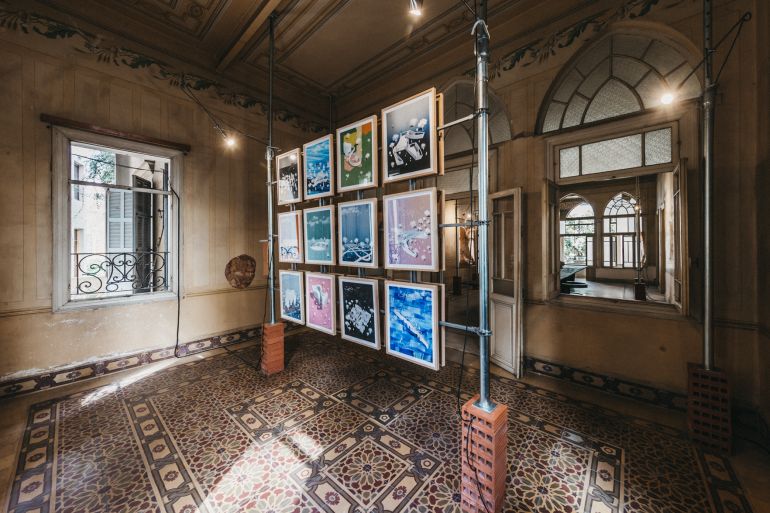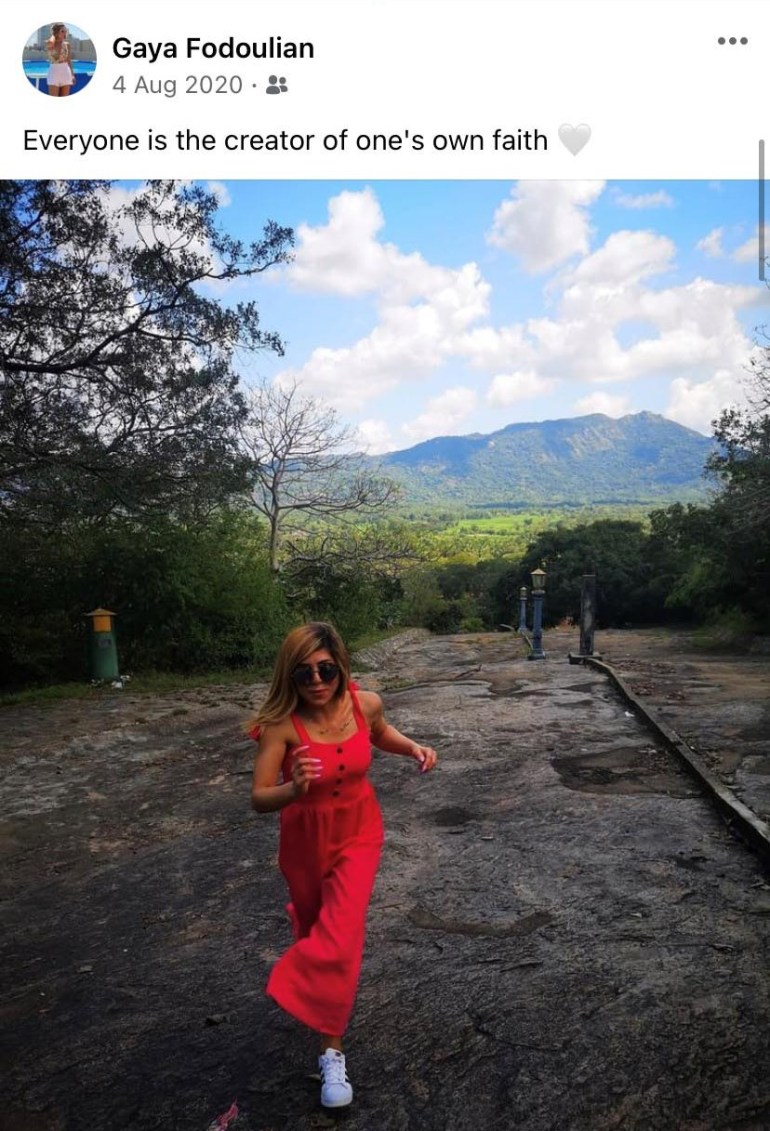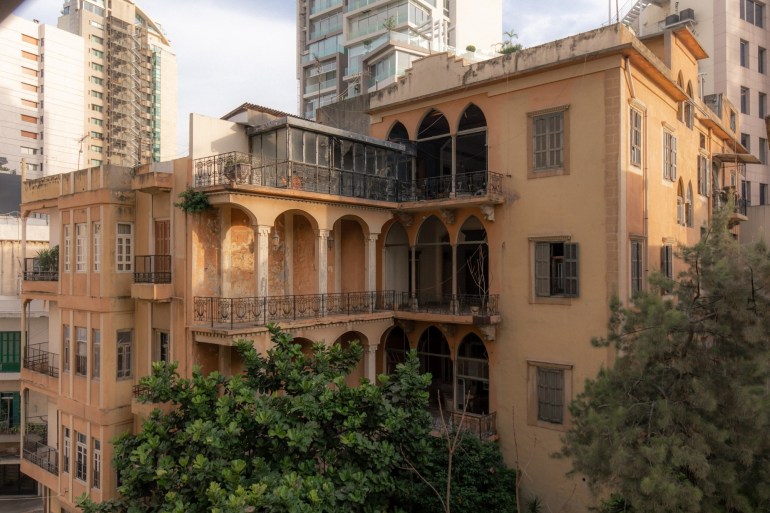Mother continues daughter’s art after losing her to Beirut blast
A young woman’s artistic dreams cut short by the 2020 Lebanon explosion is being carried further by her mother.

Beirut, Lebanon – In early 2020, Lebanese-Armenian designer Gaia Fodoulian was busy planning the launch of her new virtual gallery. The 29-year-old sought to support the region’s artists and designers with a further-reaching, modern platform.
On August 4, 2020, her dreams were cut short by the massive explosion that rocked Beirut, devastating entire neighbourhoods, and destroying countless lives. Fodoulian was one of the 208 people killed in the blast that day.
Keep reading
list of 4 itemsBeirut blast: Where is justice six months on?
Lebanon blast: Ammonium nitrate behind many industrial accidents
Lebanon blast: Why can’t migrant workers go home?
Three days after she passed away, her mother, Annie Vartivarian, decided to complete her daughter’s work in her memory. Earlier this month, the virtual platform Art Design Lebanon (AD Leb) launched “Everyone is the creator of one’s own faith”, a physical pop-up exhibition at the blast-damaged historic Tabbal Building.
“Gaia had started this project and I wanted her name, her legacy to live on, even if she is no longer with us,” Vartivarian told Al Jazeera. “I knew this was what she would have wanted me to do and I believe in what she was doing.
“I always trusted her instincts and would ask her, ‘What do you think about this?’ I still ask her sometimes, but of course, she doesn’t answer now,” she added. “A platform like AD Leb is needed in Lebanon and the region. I have faith in this venture that she had embarked on and wanted it to be realised.”
Profit for animal charity
All profits AD Leb makes from sales will go to the Gaia Fodoulian Foundation, an organisation founded to support and care for animals in need and provides assistance for animal rescuers – a cause that Fodoulian cared deeply about.
Fodoulian had set aside some funds to produce her own design pieces – a pair of modular benches that could be made from concrete or wood, which she designed as a graduate student at Milan’s Istituto Marangoni. Vartivarian took the designs and had the benches produced for AD Leb’s inaugural exhibition.

The exhibition’s title comes from the photo caption of Fodoulian’s last social media post – a carefree snap of her running towards the camera on a trip to Sri Lanka. Vartivarian said she made the post in a brief 15-minute lull in their busy afternoon, just a few hours before the blast.
“Even though she had a strong personality she was also very sensitive, which is what made her look into the artistic world. Maybe that’s why she posted that post at the last minute, that she knew her soul was leaving the world behind,” Vartivarian said. “I was so intrigued to know what was in her mind when she made that post. I thought about that caption a lot … So I proposed it to the artists in the show, kind of like Gaia’s last instruction to me maybe.
“I can’t say for sure what she had envisioned but if I start doubting everything I’ll go crazy,” she added. “She always used to ask me for my opinion on her designs and work, so I’m treating it like that now.”
‘Their own individuality’
The pop-up show brings together both newly commissioned and existing works by artists and designers Samer Bou Rjeily, Karen Chekerdjian, Hatem Imam, Sirine Fattouh, Paul Kaloustian, Nathalie Khayat, Hussein Nassereddine and Caroline Tabet.
Khayat’s work “Light Sleepers” is directly linked to last year’s tragedy, with an installation of 208 porcelain candlesticks, representing the number of lives lost in the blast. Each Raku-fired piece is unique, created with abstract shapes and moulded on impulse, glazed in a variety of colours.
“I made them in a very short period of time, so it was very intense work. I like that they have their own individuality and each carry their own story,” Khayat told Al Jazeera. “I like to work with the idea of rituals. For me, lighting a candle is a ritual by itself. It’s a gesture that carries something and, for different occasions, it carries a different meaning behind it. In this context, it’s a tribute for the people who lost their lives on August 4.”
Other projects take a broader approach to the theme of faith and belief, such as Nassereddine’s sculptural installation “The Red Castle, As It Occurred”, inspired by a poem by the famous Abbasid poet Abu al-Mutanabbi.
He presents a tall limestone column, the material probably used to build the castle originally, tinted with red ink made from an Abbasid era formula. The piece draws attention to how something small led to an incorrect belief for centuries, simply because it was written down somewhere.
“He was describing a battle happening around this red castle, and for centuries it was believed so, because there are no remains of this castle now, all that remains is this poem,” Nassereddine said. “It was believed the castle was built from brick or red stone, but more archaeological research showed that there were no structures in that time period and area build with red materials and it was only the poet’s imagination.”

Historical space
Each work is given its own room, spread across the first two floors of the spacious heritage building, with scenography designed by Ghaith & Jad. Vartivarian wanted something with more history than the usual white-walled galleries or industrial warehouses often used.
Built in the late 19th century and expanded during the French Mandate era, the building bears the characteristic lavishly decorated vaulted ceilings, triple arcade window, and geometric-tiled floors of many Lebanese heritages home. The Tabbal Building is just one of the 800 heritage buildings that suffered damage during the blast, as most of Beirut’s Ottoman architecture lies close to the port.
“It just so happened that the owner of the building had passed away during the blast and also the building has been affected,” she said. “I felt something in this building, its character and that there was a connection between the building and the exhibition.”
AD Leb hopes its use of the space will attract interest and result in proper restoration and safeguarding. For now, it has partnered with NGO Silat for Culture to organise free tours of the exhibition and the building’s history.
AD Leb also has plans for a 3D video of the exhibition to reach outside audiences and an online programme of talks and on-site performances. It hopes to schedule four exhibitions a year, featuring regional artists and collaborations with international practitioners and institutions.
Vartivarian aims for the platform to offer some hope to the Lebanese cultural community, which has taken a serious hit during the COVID-19 pandemic, coupled with the ongoing financial crisis and fallout from the blast. The badly affected areas of Gemmayzeh and Mar Mikhael are home to most of the city’s galleries and cultural instructions.
Vartivarian’s own Letitia Gallery in Hamra shuttered for good following the blast.
“To accept the situation in Lebanon for what it is – hopeless at best – is to accept defeat, to fall into despair. In order to carry on, day in and day out, I have to believe that eventually things will get better,” Vartivarian said.
“It’s hard to muster the energy, or even the courage, to emotionally invest … but it has been my duty to encourage everyone I worked with on this exhibition to fight this feeling and to not to give in to despair.”
More info at artdesignlebanon.com